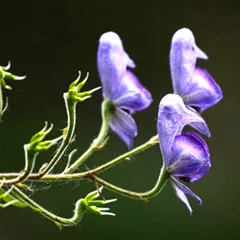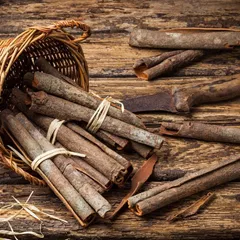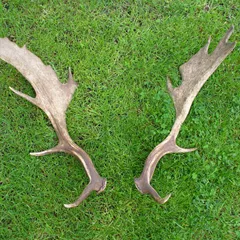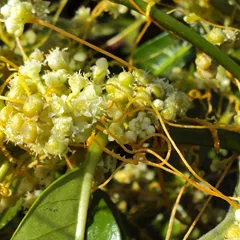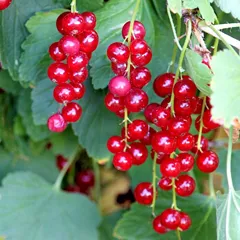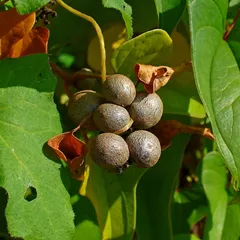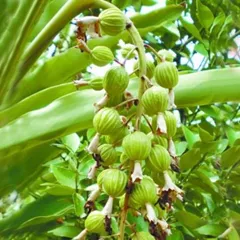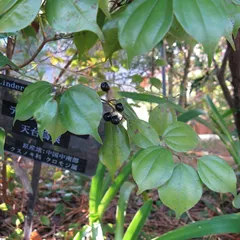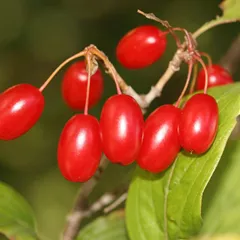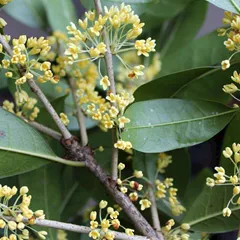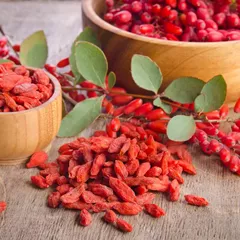Tu Si Zi Wan
Tu Si Zi Wan
Chinese: 菟丝子丸
Pinyin: Tú Sī Zi Wán
Other names: Cuscuta Seed Pill
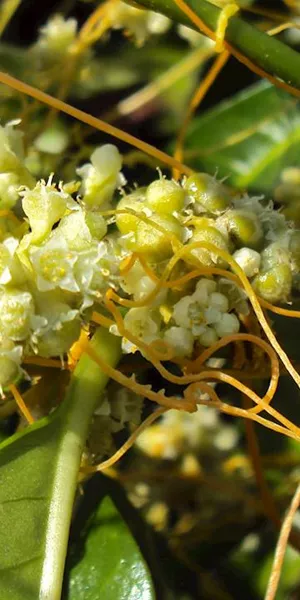
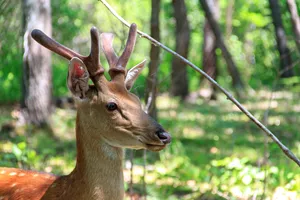
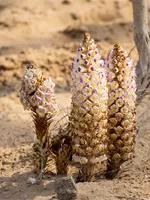
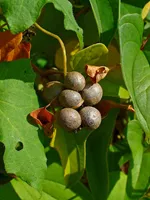




Tu Si Zi Wan
Tu Si Zi Wan
Chinese: 菟丝子丸
Pinyin: Tú Sī Zi Wán
Other names: Cuscuta Seed Pill
Number of ingredients: 11 herbs
Formula category: Formulas that warm Yang and tonify
Conditions for which it may be prescribed: Seminal emissionUrinary incontinencePremature ejaculation
- Warms the Kidneys
- Prevents abnormal leakage such as urinary incontinence or seminal emissions
Source date: 1253 AD
Source book: Formulas to Aid the Living
The information provided here is not a replacement for a doctor. You shouldn't use it for the purpose of self-diagnosing or self-medicating but rather so you can have a more informed discussion with a professional TCM practitioner.
Tu Si Zi Wan is a 11-ingredient Chinese Medicine formula with Cuscuta Seeds (Tu Si Zi), Pilose Antlers (Lu Rong), Desert-Living Cistanches (Rou Cong Rong) and Yam (Shan Yao) as principal ingredients.
Invented in 1253 AD, it belongs to the category of formulas that warm Yang and tonify. Its main actions are: 1) warms the Kidneys and 2) prevents abnormal leakage such as urinary incontinence or seminal emissions.
In Chinese Medicine health conditions are thought to arise due to "disharmonies" in the body as a system. These disharmonies are called "patterns" and the very purpose of herbal formulas is to fight them in order to restore the body's harmony.
In this case Tu Si Zi Wan is used by TCM practitioners to fight patterns like Kidney Essence Deficiency, Kidney Qi not Firm or Kidney Yang Deficiency. From a Western Medicine standpoint, such patterns can give rise to a range of conditions such as urinary incontinence, seminal emission or premature ejaculation for instance.
On this page, after a detailed description of each of the eleven ingredients in Tu Si Zi Wan, we review the patterns and conditions that Tu Si Zi Wan helps treat.
The eleven ingredients in Tu Si Zi Wan
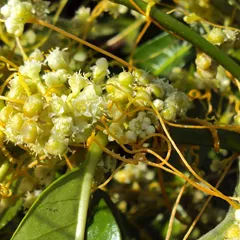
Tu Si Zi is a king ingredient in Tu Si Zi Wan. Like the name indicates, it means it has more power than other ingredients in the formula.
1. Cuscuta Seeds (Tu Si Zi)
Part used: Dried ripe seeds
Nature: Warm
Taste(s): Sweet
Meridian affinity: KidneyLiverSpleen
Category: Tonic herbs for Yang Deficiency
In general Tu Si Zi's main actions are as follows: "Tonifies Kidney Yang and Essence. Nourishes the Liver."
In the context of Tu Si Zi Wan, it is used because it , together with other key herbs of the formula, tonifies the Kidneys.

Lu Rong is a king ingredient in Tu Si Zi Wan. Like the name indicates, it means it has more power than other ingredients in the formula.
2. Pilose Antlers (Lu Rong)
Part used: Young unossified hairy antler of male cervus nippon
Nature: Warm
Meridian affinity: KidneyLiver
Category: Tonic herbs for Yang Deficiency
In general Lu Rong's main actions are as follows: "Tonifies Kidney Yang and the Governor vessel. Supplies Essence, Qi and Blood and supports growth. Strengthens the sinews and bones. Treats infertility and impotence."
In the context of Tu Si Zi Wan, it is used because it , together with other key herbs of the formula, tonifies the Kidneys.

Rou Cong Rong is a king ingredient in Tu Si Zi Wan. Like the name indicates, it means it has more power than other ingredients in the formula.
3. Desert-Living Cistanches (Rou Cong Rong)
Part used: Dried stem
Nature: Warm
Meridian affinity: KidneyLarge intestine
Category: Tonic herbs for Yang Deficiency
In general Rou Cong Rong's main actions are as follows: "Tonifies Kidney Yang, Restores Essence and Blood. Induces laxation."
In the context of Tu Si Zi Wan, it is used because it , together with other key herbs of the formula, tonifies the Kidneys.
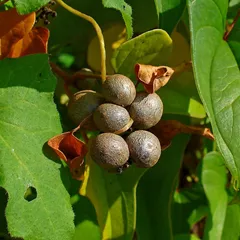
Shan Yao is a king ingredient in Tu Si Zi Wan. Like the name indicates, it means it has more power than other ingredients in the formula.
4. Yam (Shan Yao)
Part used: Dried rhizome
Nature: Neutral
Taste(s): Sweet
Meridian affinity: KidneyLungSpleen
Category: Tonic herbs for Qi Deficiency
In general Shan Yao's main actions are as follows: "Tonifies the Spleen and Stomach. Tonifies the Lung Qi and nourishes the Lung Yin. Nourishes the Kidneys and consolidates Jing."
In the context of Tu Si Zi Wan, it is used because it , together with other key herbs of the formula, tonifies the Kidneys.
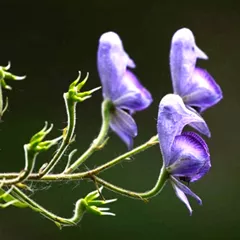
Zhi Fu Zi is a deputy ingredient in Tu Si Zi Wan. This means it helps the king ingredient(s) treat the main pattern or it serves to treat a coexisting pattern.
5. Prepared Aconite (Zhi Fu Zi)
In general Zhi Fu Zi's main actions are as follows: "Raises the collapse of Yang. Warms the meridians and relieves pain caused by Cold. Reduces Damp caused by Deficiency in Yang."
In the context of Tu Si Zi Wan, it is used because it warms the Kidney Yang.
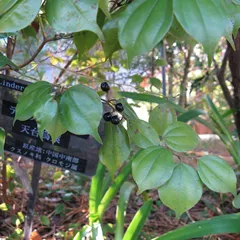
Wu Yao is a deputy ingredient in Tu Si Zi Wan. This means it helps the king ingredient(s) treat the main pattern or it serves to treat a coexisting pattern.
6. Lindera Roots (Wu Yao)
Part used: Dried root tuber
Nature: Warm
Taste(s): Pungent
Meridian affinity: BladderKidneyLungSpleen
Category: Herbs that regulate Qi
In general Wu Yao's main actions are as follows: "Warms and stimulates the flow of Qi and relieves pain. Disperses Cold and Warms the Kidneys."
In the context of Tu Si Zi Wan, it is used because it it moves and dispels the cold Qi from the Kidneys and Bladder.
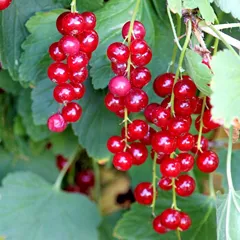
Wu Wei Zi is a deputy ingredient in Tu Si Zi Wan. This means it helps the king ingredient(s) treat the main pattern or it serves to treat a coexisting pattern.
7. Schisandra Berries (Wu Wei Zi)
Part used: Dried ripe fruits
Nature: Warm
Meridian affinity: HeartKidneyLung
Category: Herbs that stabilize and bind
In general Wu Wei Zi's main actions are as follows: "Tonifies the Kidneys and preserves the Essence. Astringes the Lung Qi and stops coughing. Retains Bodily Fluids and encourages their production. Tonifies the Heart and calms the spirit (Shen)."
In the context of Tu Si Zi Wan, it is used because it binds and grasps the Kidney Qi.

Sang Piao Shao is an assistant ingredient in Tu Si Zi Wan. This means that it either serves to reinforces the effect of other ingredients or it moderates their toxicity.
8. Praying Mantis Egg-Cases (Sang Piao Shao)
Part used: Dried egg capsule
Nature: Neutral
Meridian affinity: KidneyLiver
Category: Herbs that stabilize and bind
In general Sang Piao Shao's main actions are as follows: "Tonifies Kidneys and strengthens Yang. Restrains Essence and decreases urination."
In the context of Tu Si Zi Wan, it is used because it assists the key herbs in strengthening the Kidney Qi..
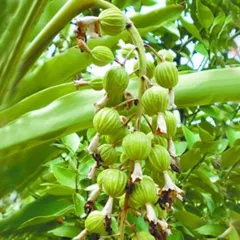
Yi Zhi Ren is an assistant ingredient in Tu Si Zi Wan. This means that it either serves to reinforces the effect of other ingredients or it moderates their toxicity.
9. Sharp-Leaf Galangal Fruits (Yi Zhi Ren)
Part used: Dried ripe fruit
Nature: Warm
Taste(s): Pungent
Meridian affinity: KidneySpleen
Category: Tonic herbs for Yang Deficiency
In general Yi Zhi Ren's main actions are as follows: "Tonifies Kidney Yang and consolidates Kidney Qi. Warms the Spleen and stops diarrhea and salivation."
In the context of Tu Si Zi Wan, it is used because it assists the key herbs in strengthening the Kidney Qi..
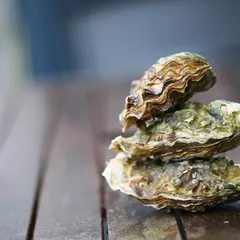
Mu Li ke is an assistant ingredient in Tu Si Zi Wan. This means that it either serves to reinforces the effect of other ingredients or it moderates their toxicity.
10. Oyster Shells (Mu Li ke)
Part used: The shell
Nature: Cold
Taste(s): Salty
Meridian affinity: BladderGallbladderKidneyLiver
Category: Herbs that anchor and calm the SpiritHerbs that pacify Internal Liver Wind and stop Tremors
In general Mu Li ke's main actions are as follows: "Calms and anchors the spirit. Moistens Dryness. Softens and removes lumps. Nourish the Yin and subdues the overflowing of the Yang,"
In the context of Tu Si Zi Wan, it is used because it assists the key herbs in strengthening the Kidney Qi..

Ji nei jin is an envoy ingredient in Tu Si Zi Wan. This means that it directs the formula towards certain area of the body and/or harmonizes the actions of other ingredients.
11. Chicken Gizzard Skins (Ji nei jin)
Part used: Lining of the chicken gizzard
Nature: Neutral
Taste(s): Sweet
Meridian affinity: BladderSpleenStomachSmall intestine
Category: Herbs that relieve Food Stagnation
In general Ji nei jin's main actions are as follows: "Improves digestion and unblocks Food Stagnation. Dissolves stones in the urinary or biliary tract."
In the context of Tu Si Zi Wan, it is used because it treats the urinary frequency and incontinence.
Conditions and patterns for which Tu Si Zi Wan may be prescribed
It's important to remember that herbal formulas are meant to treat patterns, not "diseases" as understood in Western Medicine. According to Chinese Medicine patterns, which are disruptions to the body as a system, are the underlying root cause for diseases and conditions.
As such Tu Si Zi Wan is used by TCM practitioners to treat three different patterns which we describe below.
But before we delve into these patterns here is an overview of the Western conditions they're commonly associated with:
Urinary incontinence Seminal emission Premature ejaculation
Again it wouldn't be correct to say "Tu Si Zi Wan treats urinary incontinence" for instance. Rather, Tu Si Zi Wan is used to treat patterns that are sometimes the root cause behind urinary incontinence.
Now let's look at the three patterns commonly treated with Tu Si Zi Wan.

The Kidneys is a so-called "Zang" Organ. Learn more about the Kidneys in Chinese Medicine
Kidney Essence Deficiency
Pulse type(s): Empty (Xu), Floating (Fu)
Tongue coating: Complete absence of coating
Tongue color: Pale
Symptoms: Deafness Tinnitus Hair loss Sterility Dizziness Sore back Weak Limbs Retardation Infertility Poor memory Loose teeth Hair Graying Blurred vision Absentmindness Mental dullness Lower back pain Premature aging Softening of bones Primary amenorrhoea Poor sexual ability Poor bone development Decreased mental sharpness Late closure of fontanelle Loss of hearing or deafness
Tu Si Zi Wan is sometimes prescribed by TCM practitioners to treat Kidney Essence Deficiency. This pattern leads to symptoms such as deafness, mental dullness, retardation and softening of bones. Patients with Kidney Essence Deficiency typically exhibit empty (Xu) or floating (Fu) pulses as well as Red and peeled tongue .
Kidney Essence (Jing 精) Deficiency usually involves Deficiency of Kidney Yin and, to some extent, Kidney Yang. Its signs manifest in relation to growth, development, reproduction, sexuality, bones, marrow, the brain, teeth, memory and hair.
Poor hereditary constitution in children, aging, excessive... read more about Kidney Essence Deficiency

The Kidneys is a so-called "Zang" Organ. Learn more about the Kidneys in Chinese Medicine
Kidney Qi not Firm
Pulse type(s): Deep (Chen), Weak (Ruo)
Tongue color: Pale
Symptoms: Fatigue Enuresis Back pain Cold limbs Spermatorrhoea Sore lower back Weak lower back Feeling of cold Uterus prolapse Abundant urination Frequent urination Nocturnal emissions Weak stream urination Recurrent miscarriage Premature ejaculation Incontinence of urine White vaginal discharge Dribbling after urination Dragging down feeling of abdomen Weakness and aching in the knees
Tu Si Zi Wan is sometimes prescribed by TCM practitioners to treat Kidney Qi not Firm. This pattern leads to symptoms such as sore lower back, weak lower back, abundant urination and weak stream urination. Patients with Kidney Qi not Firm typically exhibit deep (Chen) or weak (Ruo) pulses as well as Slightly Pale tongue.
This pattern is also called ‘Lower Original Qi (元气 Yuan Qi) not Firm’, to show that it is also caused by a shortage of the Original Qi. When Original Qi is weak in the Lower Burner, Qi cannot hold Body Fluids which leads to many 'leaking' symptoms of the sperm, vaginal discharge or urination.

The Kidneys is a so-called "Zang" Organ. Learn more about the Kidneys in Chinese Medicine
Kidney Yang Deficiency
Pulse type(s): Deep (Chen), Slow (Chi)
Tongue coating: Thin white coating
Tongue color: Pale
Tongue shape: Swollen
Symptoms: Asthma Chills Fatigue Dysuria Tinnitus Coughing Dizziness Weak legs Lassitude Impotence Sore back Pale face Back pain Dark face Tiredness Knee pain Depression Cold limbs Leukorrhea Weak Limbs Weak knees Infertility Loose teeth Late period Hot flushes Poor memory Loose stools Constipation Incontinence Night sweats Spermatorrhea Poor appetite Oedema of legs Abdominal pain Dripping urine Scanty periods Lower back pain Feeling of cold Low sperm count Sore lower back Premature aging Decreased libido Aversion to cold Cold extremities Oedema of ankles Vaginal discharge Frequent urination Urinary difficulty Pale color periods Abdominal fullness Cold and weak knees Persistent diarrhea Nocturnal emissions Cold hands and feet Premature menopause Infertility in women Night time urination Pale menstrual blood Premature ejaculation Incontinence of urine Prostatic hypertrophy Bright-white complexion Absence of menstruation Thin and watery periods Lower abdominal pressure Pale and abudant urination Thin body lacking strength Loss of hearing or deafness Spasms of the lower abdomen Cold in the lower extremities Edema of the lower extremities Weakness and aching in the knees Exhaustion from long-term illness Weakness of the lower extremities Thin and watery vaginal discharge Nocturnal emissions without dreams Sensation of cold in the lower back Soreness and weakness in the lower back Cold sensation in the lower half of the body
Tu Si Zi Wan is sometimes prescribed by TCM practitioners to treat Kidney Yang Deficiency. This pattern leads to symptoms such as lower back pain, dizziness, tinnitus and cold and weak knees. Patients with Kidney Yang Deficiency typically exhibit deep (Chen) or slow (Chi) pulses as well as Pale tongue.
Kidney Yang Deficiency causes Internal Cold and weakness. It indicates that the Fire of the Gate of Life, which is located between the two Kidneys and supplies fundamental warmth for the body, is also impaired. Therefore, the Organs lack warmth and cannot fully perform their... read more about Kidney Yang Deficiency
Formulas similar to Tu Si Zi Wan
You Gui Wan is 27% similar to Tu Si Zi Wan
Fu Tu Dan is 27% similar to Tu Si Zi Wan
Suo Quan Wan is 27% similar to Tu Si Zi Wan
Ba Wei Di Huang Wan is 18% similar to Tu Si Zi Wan
Shen Qi Wan is 18% similar to Tu Si Zi Wan
Zuo Gui Wan is 18% similar to Tu Si Zi Wan

